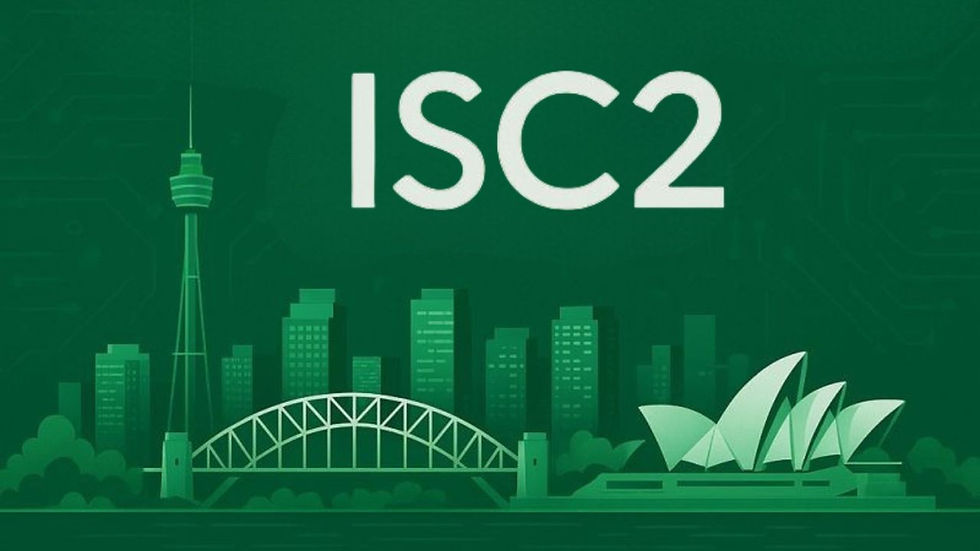Why Pragmatism is Driving Singapore's AI Success Story: From Strategy to Implementation with Harishankar Durairaj
- Juan Allan
- Oct 6
- 3 min read
Harishankar Durairaj on AI's rapid growth in Singapore. We explore key drivers, industry impacts, and the future of intelligent systems

A nation's ability to lead in the AI era is not determined by its size, but by the clarity of its vision and its pragmatic focus on solving real-world business problems.
To discuss this, we sit down with Harishankar Durairaj, whose work at the intersection of AI and industry offers a perfect case study. As CTO at Seewise.AI and a leader applying Vision AI to transform manufacturing and logistics in Singapore, Harishankar operates at the heart of this hypothesis.
In this interview, he dissects the powerful combination of national strategy, collaborative ecosystems, and a business-first mindset that is propelling Singapore to the forefront of global AI adoption, proving that impact, not just innovation, is the true measure of success.
Interview with Harishankar Durairaj
What factors are driving the rapid growth of AI adoption in Singapore?
Singapore’s AI adoption is accelerating because of three key enablers: a strong national vision, a supportive ecosystem, and a pragmatic business culture.
The government’s Smart Nation initiative and National AI Strategy 2.0 have laid a clear direction for integrating AI into the economy. At the same time, Singapore’s world-class digital infrastructure, public-private partnerships, and focus on applied research make it an ideal testbed for innovation.
But what truly drives adoption is industry maturity; companies here see AI not as a buzzword, but as a strategic lever for efficiency, safety, and sustainability. This mindset is accelerating real-world impact, especially in manufacturing, logistics, and smart city domains.
Which industries in Singapore are seeing the biggest impact from AI technologies?
We’re witnessing strong momentum in manufacturing, healthcare, logistics, and finance.
In manufacturing, AI and computer vision are transforming operations: improving quality, safety, and reducing energy and material losses. This is the space where we at Seewise.AI focus, bringing Vision AI agents that help industries monitor productivity and sustainability in real time.
Healthcare is seeing breakthroughs in diagnostics, patient monitoring, and administrative automation.
Finance continues to leverage AI for fraud detection, compliance, and personalized banking.
Together, these sectors are proving that AI’s greatest value comes from integrating intelligence into everyday workflows: not just as a standalone technology, but as part of a smarter ecosystem.
What are the main challenges companies face when trying to implement AI solutions?
The biggest challenge isn’t technology, it’s adoption and alignment. Many organisations struggle to bridge the gap between AI capability and business value.
Common challenges include:
Lack of quality data or unified data systems.
Integration complexity with legacy infrastructure.
Difficulty in scaling from POC to production.
And importantly, change management, helping teams trust and use AI insights effectively.
Successful adoption requires a strong partnership between AI providers and domain experts, ensuring solutions are tailored to the specific context rather than being generic models.
How is the shortage of skilled AI professionals affecting innovation and growth?
There’s a clear talent bottleneck, especially for roles that combine domain expertise with AI engineering. While Singapore has made impressive strides through programs like AI Apprenticeship by AI Singapore (AISG) and university partnerships, demand still outpaces supply.
This shortage has led companies to rethink their approach to innovation: focusing more on automation of AI workflows, no-code/low-code tools, and collaborative ecosystems where data scientists, engineers, and operations teams can co-create solutions efficiently.
At Seewise, for instance, we’re building internal frameworks that let engineers automate repetitive ML tasks, freeing them to focus on higher-value work. This mindset helps mitigate the skills gap while scaling impact.
What ethical or societal concerns are emerging as AI becomes more widespread?
As AI becomes deeply embedded in decision-making, transparency, accountability, and bias mitigation are crucial.
The concern is no longer just about what AI can do, but what it should do. Singapore has taken a leading stance here through Model AI Governance Frameworks that set global benchmarks for responsible AI use.
For industrial applications like ours, ethics translates to safety, data privacy, and human oversight. AI should always augment human judgment, not replace it. Ensuring explainability and fairness in how AI systems operate builds trust and trust is the foundation for sustainable adoption.
How can businesses and educators work together to prepare Singapore’s workforce for an AI-driven future?
Preparing for an AI-driven future requires collaboration, not separation, between industry and academia.
Businesses can provide real-world problem statements and data, while educators equip students with theoretical depth and ethical grounding. Programs that combine hands-on AI exposure, internships, and applied research are essential.
At Seewise, we believe in a “learn by building” approach: empowering engineers, technicians, and operators to use AI tools in their daily routines. When people experience AI as a co-pilot rather than a threat, transformation happens organically.
Singapore’s strength lies in its ability to align policy, education, and enterprise and that’s exactly what will make its AI ecosystem globally distinctive.



Comments